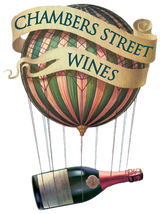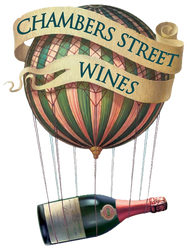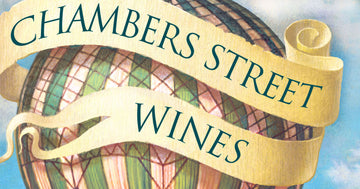New arrivals from Philippe Delmée!
7/6/22 -

We're very happy to have five new wines in our Loire section today, all of them from our friend Philippe Delmée, who is situated in Faye D'Anjou, in the Anjou appellation. A math teacher in his former life, Philippe became interested in wine in the early 2000's, and after studying for 2 years, began commuting from Brittany to Angers, in the Loire Valley. He worked with Benoit Courault and at Domaine des Griottes, before eventually making his start with one hectare (about 2 acres) that Courault helped him find in Faye D'Anjou.
Working about 6 hectares total, spread over multiple small vineyard parcels, Philippe's approach has always been low-intervention, with the use of only copper and small amounts of sulfur in the vineyard, along with biodynamic and plant-based treatments. Most of his wines are started with a "pied de cuve," which is a small batch of wine that is introduced to a larger vat of fresh juice once there are healthy yeast populations going. Though he uses a fraction of a mg/l of SO2 (usually around .5 or even less) with the pied de cuve, he does not add at any other stage, during aging or at bottling.* For the miniscule amount of SO2 used (and at such an early stage), his wines are always very clean and straightforward. There aren't a lot of winemakers whose wines are as consistent vintage after vintage as his are, and these 2020s we just got in are a testament! His reds have always been vibrant, zingy, and thirst quenching. The whites, all from Chenin Blanc, are serious and structured, owing much of their minerality to the schist soils of Faye d'Anjou.

2020 was indeed a difficult year for grape growing in the Loire. There was frost in the Spring, a bit of mildew in the summer, so there were not many grapes to pick at harvest. "This is the farming game," remarked Philippe in an email exchange. Every year there are challenges, with late frosts very common in the area, and mildew a regular threat. He, like everyone in this area (and any slightly humid growing region for that matter) has had to learn to adapt, pruning later to avoid the late Spring frosts killing their buds, for example. Even with these new approaches to pruning, when working without chemical protection against mildew, there will always be loss, which can be debilitating and downright discouraging. I have chatted with Philippe about this on several occasions, and he generally shrugs his shoulders and sighs. When working with nature and relying on a crop, it seems acceptance is important and some positivity is essential. He's got a bit of both, along with a healthy level of sarcasm.

Did I mention he loves vinyl and that our last lunch was an incredible roast chicken with homemade frites, with MF Doom on wax in the background? Indeed, Philippe is very much a classic Loire paysan vigneron, but he's also a pretty hip guy!
*The use of miniscule amount of SO2 with a pied de cuve, explained above, is very rare, but it does raise the question of the timing of the use of SO2. I've talked with Eric Texier a bunch regarding this subject, and he has made it clear that you can use a lot of sulfur at the wrong moment and basically have none of the desired effect (essentially you can make a "mousy" or flawed wine even when sulfur is used). Very common in the "natural wine" world is the use of a small amount of SO2 only at bottling, when the wine is exposed to small amounts of oxygen during the bottling process. Less common is SO2 several months before bottling, though there are merits to this approach, as the wines have several months to "settle" and harmonize before bottlng, and the effect of sulfur on aromatics is lessened over time. If you try the (non-sulfité) 'N' Morgon from the Lapierre family in Beaujolais, for example, alongside their (sulfured) 'S' within the first 6-12 months after bottling, the 'N' is always markedly more aromatic and "open," but the difference is way less discernable after several years in bottle. It seems the idea of using a tiny amount of SO2 in a pied de cuve fermentation is perhaps the most rare, but so is doing pied de cuve style. Of visits I've made to estates over the years, I only remember Domaine des Sablonettes, Christian Ducroux, and Philippe Delmee mentioning pied de cuve as an approach, though I'm sure there are many others who employ the technique. To be sure, I'm rambling here, but I do find the conversations to be interesting, and wanted to share with our readers. To me, using the extremely small amount he uses is basically like using none. Some argue that during fermentation added SO2 will be broken down and will not show on an analysis of the finished wine. In the end, I have decided not to lose sleep over it. The wines have an energy and purity that bring a joyful and uplifting feeling. They are truly "wines of nature," as you will discover if you try them!



